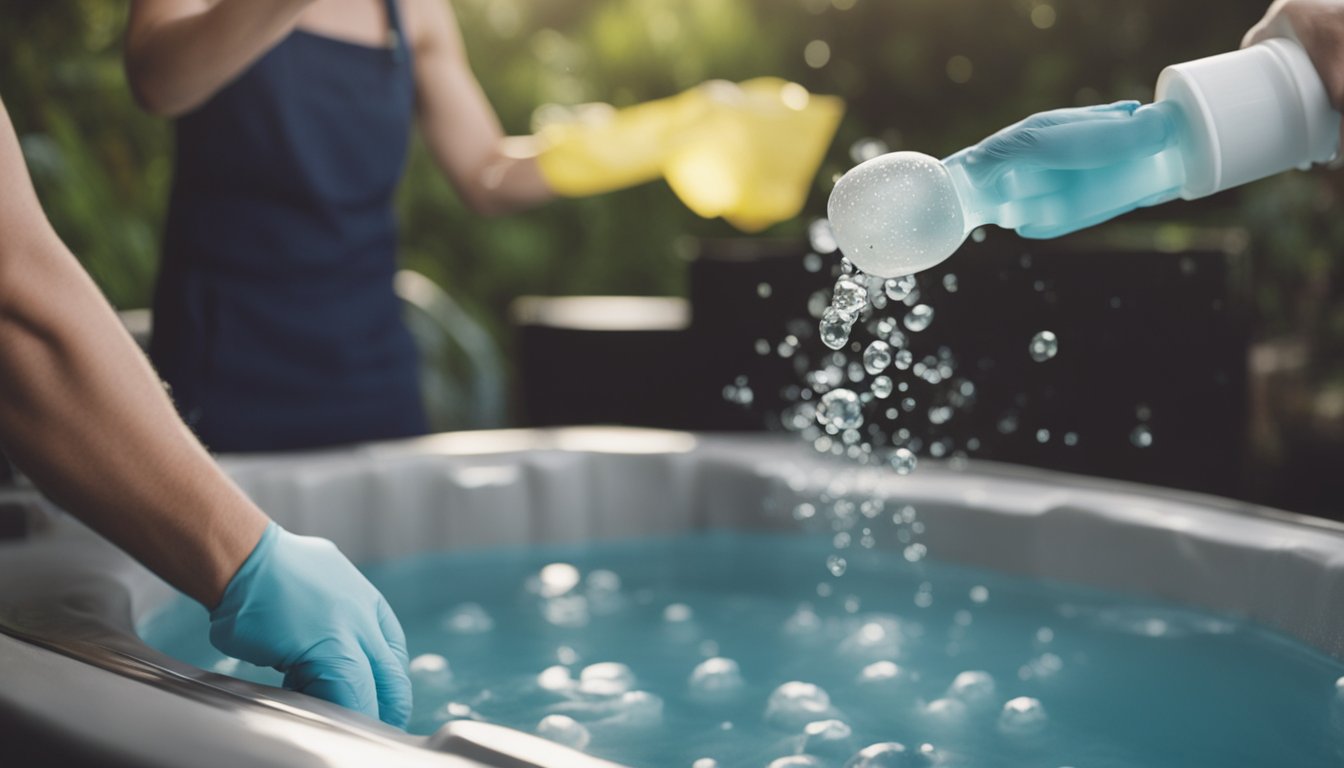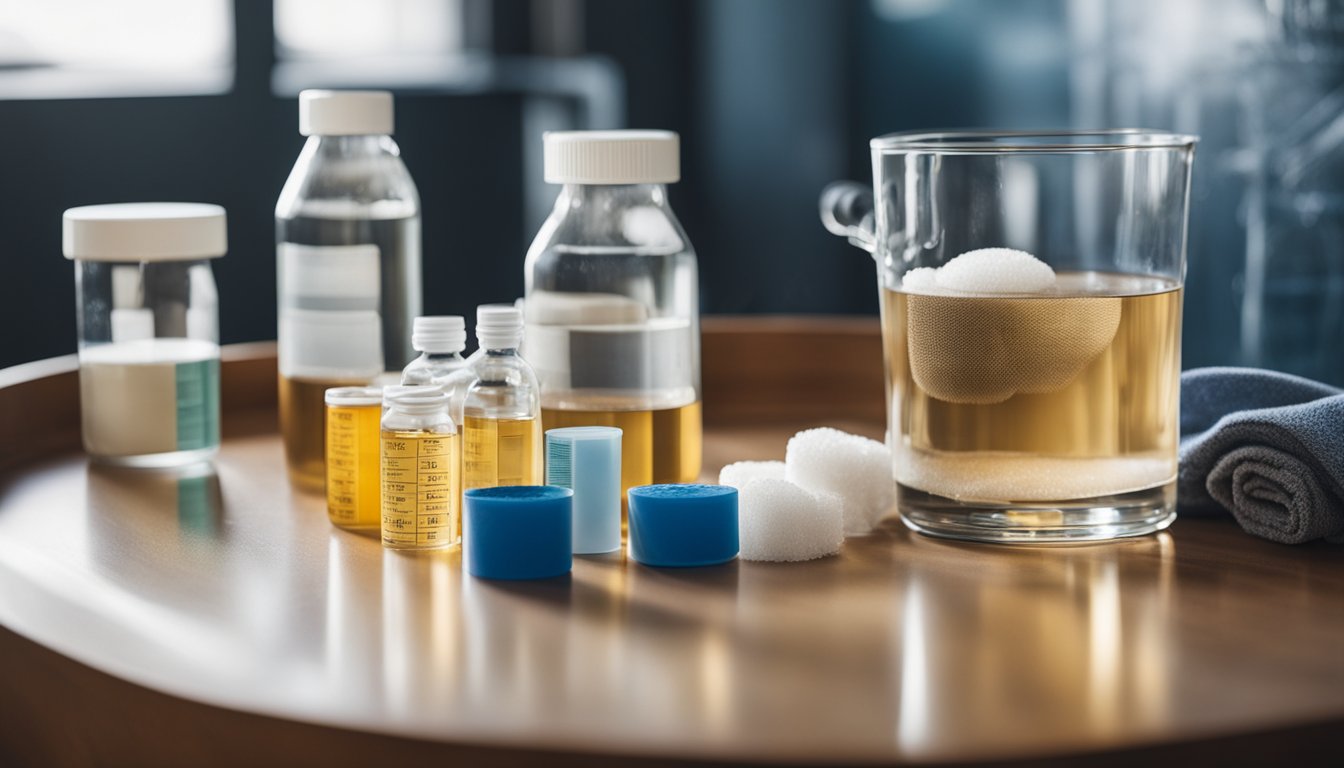Late updated: 30 Jun 2024 14:06
Written by: James Whitaker
Hot Tub Water Treatment Techniques: Essential Tips for Clean and Safe Soaking
Owning a hot tub brings significant benefits to our quality of life. Beyond providing a place for relaxing massages and improved sleep, it also offers a wonderful opportunity for family bonding close to home. Proper hot tub water treatment is essential to enjoying these benefits fully and maintaining a clean and safe environment.

There are several techniques we need to consider to ensure our hot tub water remains balanced and healthy. Regular testing and adjustments, such as controlling alkalinity and pH levels, are vital. Additionally, understanding the use of sanitizers and shock treatments can make a considerable difference in the longevity and cleanliness of our hot tub water.
Keeping our hot tub water in top condition doesn't have to be complicated. Armed with the right knowledge and tools, including pH testers and appropriate chemicals, we can easily manage water quality. Learning about advanced treatment technologies and frequently asked questions will equip us to handle any issues that may arise effectively.
Key Takeaways
- Proper water treatment ensures a safe and clean hot tub environment.
- Regular testing and balancing is essential for water quality.
- Knowledge of treatment technologies helps manage and prevent issues.
Understanding Hot Tub Water Treatment
Maintaining a hot tub involves a combination of water balancing techniques, effective sanitisation, and routine cleaning practices. Each of these elements plays a crucial role in ensuring the longevity and enjoyment of your hot tub experience.
Fundamentals of Hot Tub Maintenance
Effective hot tub maintenance begins with understanding the basics. Regular use of test strips to check pH, alkalinity, and calcium levels is essential. These three parameters must be balanced to prevent corrosion, mineral build-up, and skin irritation.
Daily maintenance includes checking and adjusting sanitizer levels, often using chlorine or bromine. Weekly tasks involve cleaning the filters with a filter cleaner, and monthly tasks may include a full shock treatment to break down organic contaminants.
Water Balancing Techniques
Balancing the water in your hot tub ensures a pleasant and safe bathing experience. Key elements include maintaining a pH level between 7.4 and 7.6. pH levels that are too high or too low can cause discomfort and damage to the tub's components.
Alkalinity should be maintained between 80 and 120 parts per million (ppm). This acts as a pH buffer, preventing drastic changes. If alkalinity drops, an alkalinity increaser can be used. Conversely, if it’s too high, adding an alkalinity reducer will correct the levels.
Calcium hardness is another critical factor, ideally kept between 100 and 250 ppm. Low calcium can cause corrosion, while high calcium results in scale formation.
Sanitisation and Cleaning Practices
Sanitisation is the cornerstone of hot tub water treatment. Chlorine and bromine are the most commonly used sanitizers. Chlorine is quick-acting but needs more frequent monitoring. Bromine is more stable in hot water but can be slower to dissolve.
Regularly shocking the water, ideally once a week, helps in breaking down organic waste and reactivating your sanitizer. Cleaning practices include scrubbing the tub’s interior and rinsing the filters regularly. Filters should be soaked in a filter cleaner at least once a month to ensure they effectively trap debris and contaminants.
Routine spa maintenance, careful water balancing, and diligent sanitisation create a cleaner, safer, and more enjoyable hot tub experience for all users.
Advanced Water Treatment Technologies

Advanced water treatment technologies for hot tubs focus on modern methods to ensure clean, safe, and healthy water. We will explore options that minimise chemical use and systems that automate sanitisation, providing convenience and effectiveness.
Chemical-Free Sanitisation Options
To reduce reliance on traditional chemicals, several alternatives have been developed. Ozone generators use ozone gas to neutralise bacteria and contaminants. By injecting ozone into the water, these systems offer a powerful oxidising effect that helps maintain cleanliness without significant chemical residues.
Mineral sanitisers are another option. These systems release natural minerals into the water, such as silver and copper, which have bactericidal properties. This method helps control algae and bacteria while reducing the need for chlorine or other harsh chemicals.
Salt water systems create a mild form of chlorine through electrolysis. By converting salt into hypochlorous acid, these systems provide effective sanitisation while maintaining softer water that is gentler on the skin.
Automated Sanitisation Systems
Automated systems are designed to maintain water quality with minimal manual intervention. Chlorine generators are a popular choice, especially in the form of in-line chlorine sanitation systems. These units automatically produce and disperse chlorine, ensuring consistent disinfection and reducing the need for regular dosing.
Another sophisticated system is the freshwater salt system. This setup uses a salt cell to convert salt into chlorine automatically, creating a self-regulating sanitisation process that maintains optimal chlorine levels.
These advancements in water treatment technologies provide hot tub owners with efficient, low-maintenance solutions to keep their water clean and safe. Whether through chemical-free methods or automated systems, there are various options to cater to different preferences and needs.
Frequently Asked Questions

We've compiled answers to some of the most common questions regarding hot tub water treatment to help you maintain a pristine and healthy spa environment.
How can I maintain crystal clear water in my hot tub?
Maintaining crystal clear water requires regular testing and balancing of chemical levels. Use digital testers to check pH, alkalinity, and sanitizer levels, and adjust as needed. Keeping the water clean also involves using filters, shocking the water, and maintaining a consistent cleaning schedule.
Which methods are most effective for treating water in hot tubs for beginners?
Beginners should start with basic water testing kits to monitor pH and alkalinity. Using a combination of chlorine or bromine sanitizers will keep the water clean. Digital testers can simplify the process and provide accurate readings. Regular maintenance, such as weekly testing and adjustments, is crucial for optimal water quality.
What are the best natural options for treating hot tub water?
Natural options include using mineral purifiers that reduce the need for traditional chemicals. Enzyme-based water treatments can also help by breaking down organic contaminants. Additionally, maintaining a clean and covered hot tub reduces debris and contributes to water quality, minimising the need for harsh chemicals.
What is an ideal maintenance schedule for hot tub water treatment?
An ideal maintenance schedule includes testing water quality at least once a week. Adjust chemical levels based on test results such as pH, alkalinity, and sanitizer levels. Monthly tasks should include cleaning filters and inspecting the hot tub for any signs of wear or damage. Draining and refilling the hot tub every three to four months helps maintain water freshness.
Which chemicals are essential for hot tub water care post-refill?
After refilling, shock the water with a chlorine or non-chlorine shock treatment. Adjust pH levels to between 7.2 and 7.8, and ensure alkalinity is between 80-120 ppm. Regularly test and maintain sanitizer levels using either chlorine or bromine tablets or granules. These steps are crucial for creating a safe bathing environment.
How can I preserve my hot tub water without using traditional chemicals?
To preserve water without traditional chemicals, consider using UV or ozone systems that kill bacteria and purify water. Mineral sanitizers also offer an effective alternative. Regularly draining and refilling the hot tub, along with proper filtration, significantly reduces reliance on conventional chemicals. These methods help maintain a chemical-free spa experience.
